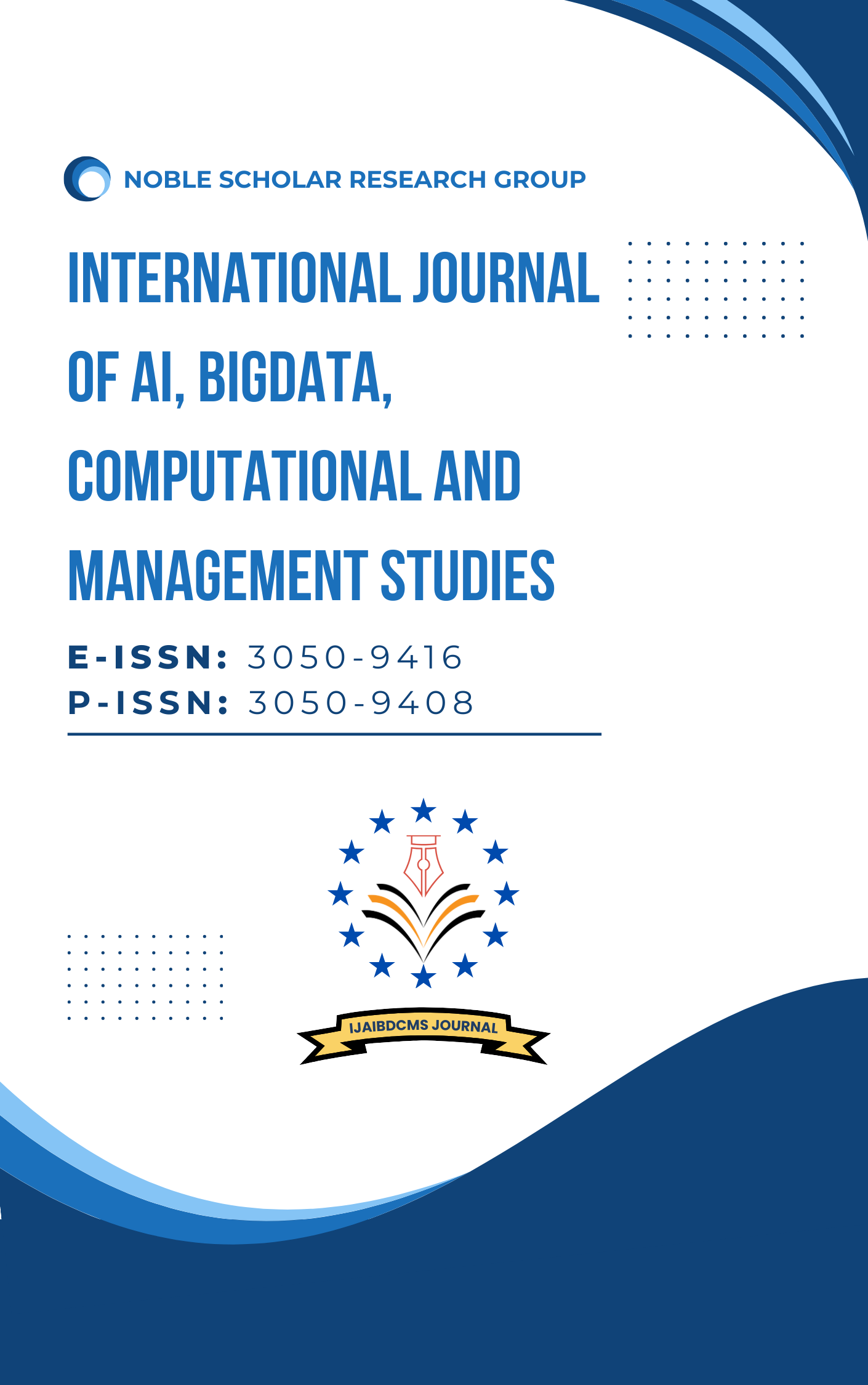Quantum Machine Learning for Big Data Processing: Opportunities, Challenges, and Future Directions
DOI:
https://doi.org/10.63282/3050-9416.IJAIBDCMS-V1I4P101Keywords:
Quantum Machine Learning, Big Data, Quantum Computing, Quantum Algorithms, Machine Learning, HighPerformance ComputingAbstract
The explosive growth of data generation in recent years has pushed the boundaries of classical machine learning algorithms, creating a pressing need for more efficient and scalable solutions. Quantum machine learning (QML), an emerging interdisciplinary field combining quantum computing and machine learning, offers the potential to address these challenges. This paper provides a comprehensive overview of QML for big data processing, exploring its opportunities, inherent limitations, and future directions. We delve into key QML algorithms like Quantum Principal Component Analysis (QPCA), Quantum Support Vector Machines (QSVM), and Quantum Neural Networks (QNNs), analyzing their computational complexities and potential speedups over classical counterparts. We also discuss the challenges associated with practical implementation, including hardware limitations, data encoding, and the development of robust error correction techniques. Finally, we outline promising research avenues that could unlock the full potential of QML for big data processing, ultimately revolutionizing fields like drug discovery, finance, and materials science
References
1. Schuld, M., Fingerhuth, M., & Petruccione, F. (2017). Implementing a distance-based classifier with a quantum interference circuit. EPL (Europhysics Letters), 119(6), 60002.
2. Wiebe, N., Braun, D., & Lloyd, S. (2012). Quantum algorithm for data fitting. Physical Review Letters, 109(5), 050505.
3. Harrow, A. W., Hassidim, A., & Lloyd, S. (2009). Quantum algorithm for linear systems of equations. Physical Review Letters, 103(15), 150502.
4. Paparo, G. D., Dunjko, V., Makmal, A., Martin-Delgado, M. A., & Briegel, H. J. (2014). Quantum speedup for active learning agents. Physical Review X, 4(3), 031002.
5. Lloyd, S., & Weedbrook, C. (2018). Quantum generative adversarial learning. Physical Review Letters, 121(4), 040502.
6. Dunjko, V., & Briegel, H. J. (2018). Machine learning & artificial intelligence in the quantum domain: A review of recent progress. Reports on Progress in Physics, 81(7), 074001.
7. Wiebe, N., Kapoor, A., & Svore, K. M. (2014). Quantum algorithms for nearest-neighbor methods for supervised and unsupervised learning. Quantum Information & Computation, 15(3-4), 316-356.
8. Lloyd, S., Mohseni, M., & Rebentrost, P. (2014). Quantum principal component analysis. Nature Physics, 10(9), 631-633.
9. Aaronson, S. (2015). Read the fine print. Nature Physics, 11(4), 291-293.
10. Aïmeur, E., Brassard, G., Gambs, S., & Kossowski, M. (2006). Machine learning in a quantum world. Canadian Journal of Physics, 84(6), 533-549.
11. Ciliberto, C., Herbster, M., Ialongo, A. D., Pontil, M., Rocchetto, A., Severini, S., & Wossnig, L. (2018). Quantum machine learning: A classical perspective. Proceedings of the Royal Society A: Mathematical, Physical and Engineering Sciences, 474(2209).
12. Perdomo-Ortiz, A., Benedetti, M., Realpe-Gómez, J., & Biswas, R. (2018). Opportunities and challenges for quantumassisted machine learning in near-term quantum computers. Quantum Science and Technology, 3(3), 030502.
13. Schuld, M., Sinayskiy, I., & Petruccione, F. (2015). An introduction to quantum machine learning. Contemporary Physics, 56(2), 172-185.
14. Biamonte, J., Wittek, P., Pancotti, N., Rebentrost, P., Wiebe, N., & Lloyd, S. (2017). Quantum machine learning. Nature, 549(7671), 195-202.
15. Rebentrost, P., Mohseni, M., & Lloyd, S. (2014). Quantum support vector machine for big data classification. Physical Review Letters, 113(13), 130503.



